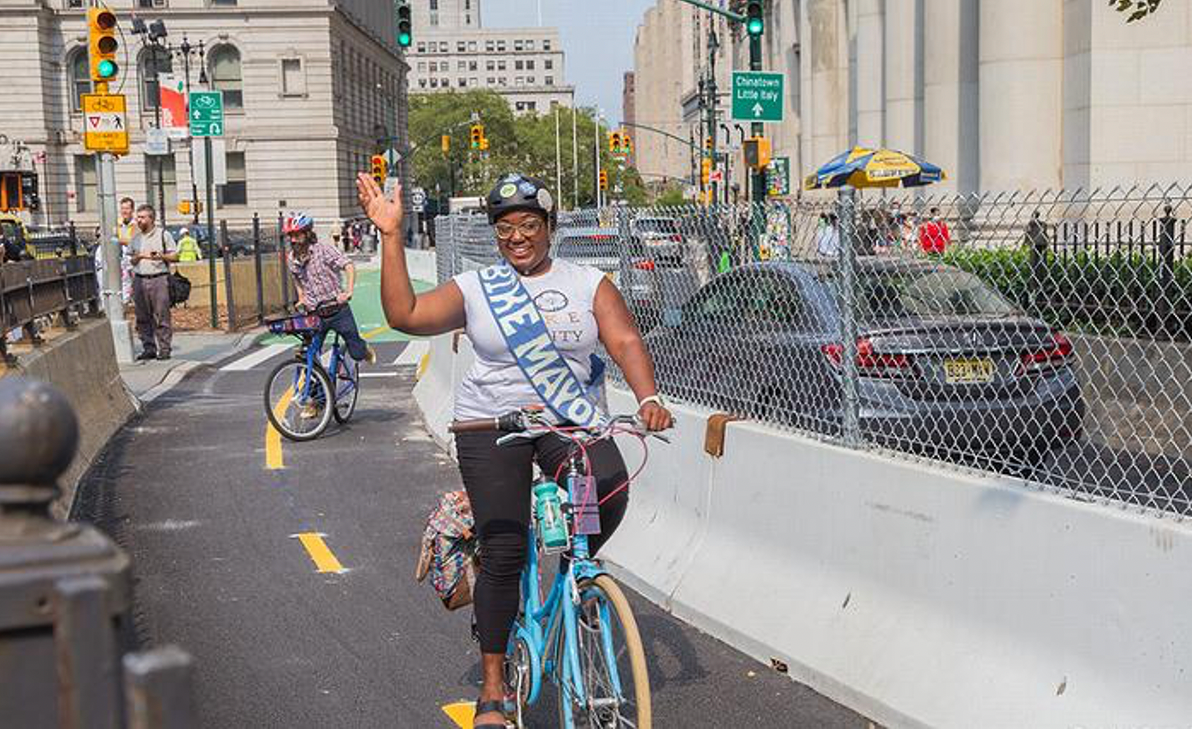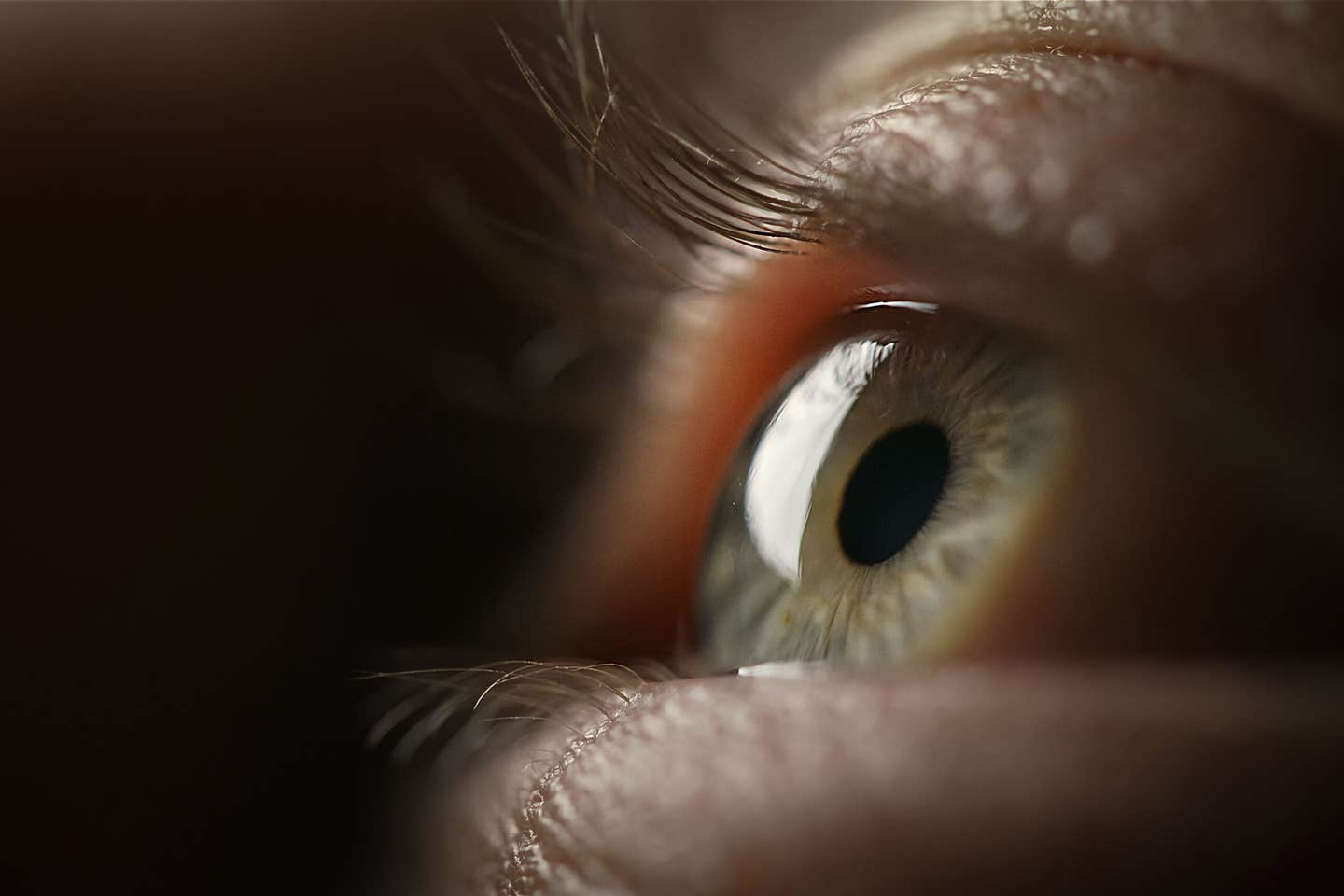Imagine if there were zero traffic fatalities in cities across America
Across the United States each year, there are roughly 5,000 pedestrian deaths and 800 bicyclist deaths.

[Oct 24, 2021: The Brighter Side of News]
Courtney Williams, the People’s Bike Mayor of New York, is one of the first to cross the East River using the new dedicated, two-way bike lane on the iconic Brooklyn Bridge
On a Monday morning in October, the driver of a pickup truck killed Thomas Panto, 32, who was riding an e-bike in Long Island City, a residential and commercial neighborhood of Queens, a borough of New York City. There have now been at least 206 traffic deaths in New York this year, at least 16 cyclists killed.
Across the United States each year, there are roughly 5,000 pedestrian deaths and 800 bicyclist deaths. Another 65,000 pedestrians and 48,000 bicyclists are injured in roadway crashes annually, according to the Federal Highway Administration.
"The United States stands out among peer nations as the most dangerous place to walk, bike, and drive. We lose nearly 40,000 people each year to traffic violence, a per-capita rate double that of the European Union and Canada," writes Jenny O’Connell, a senior program manager at the National Association of City Transportation Officials, in a new article for Transportation Alternatives’ "Vision Zero Cities Journal."
On a mission to increase safety on American streets, the 2021 Vision Zero Cities Conference opened virtually on Wednesday, October 20. Three days of in-depth meetings delve into the most pressing issues, with an important panel on the new ethics of traffic engineering, all to further the goal of zero traffic fatalities and injuries.
O’Connell writes, "Pedestrian deaths, concentrated in our pedestrian-dense cities, have been rising steeply for a decade and reached a 30-year high in 2019. And a recent study found that 75 percent of our country’s most dangerous roads for pedestrians border low-income neighborhoods, clear evidence that the U.S. traffic-safety crisis is not borne evenly by all communities."
Even more people died on U.S. roads in 2020, even with lockdowns halting commutes everywhere and a 13 percent overall decline in traffic volumes from the previous year. The National Highway Traffic Safety Administration estimates that fatal crashes rose by eight percent, representing a 24 percent increase from 2019.
"These trends point to an unavoidable truth," O'Connell writes. "We have built our roads to encourage deadly driving speeds, and traffic congestion is one of the only 'tools' keeping our rising fatality rate from being even worse than it is."
Obscure No More, Federal Street Manual Gets a Redux
By May 14, Americans had submitted over 25,000 comments in a once-in-a-decade chance to ask the Federal Highway Administration (FHWA) to make changes to the Manual on Uniform Traffic Control Devices (MUTCD). This regulatory document dictates the design and implementation of road signs, signals, and markings, and by extension, what nearly every street looks and functions like throughout the United States.
Related Stories
Attracting 10 times more comments than the last time the MUTCD was updated in 2009, the response to this opportunity demonstrates the degree to which Americans want change, traffic experts say.
Detailed, technical comments from dozens of major U.S. cities, transit agencies, national safety groups, and other safety and environmental experts underscore the high level of public concern about the poor safety record on U.S. roads and a strong desire for FHWA to take decisive action to save lives and reduce transportation emissions.
"Pedestrian fatalities have risen 50 percent over the past decade, and our streets are the most dangerous of any of our peer countries, with over 40,000 people dying every year," said Jane Terry, vice president, Government Affairs at the National Safety Council. "It’s clear we must take a more holistic safe system approach when it comes to roadway design—setting speeds with safety as the guide and updating pedestrian safety to support their safe mobility. Safety must be prioritized in a MUTCD rewrite."
Chorus of Support for New Ethics of Transportation Engineering
"Making walking and moving easier outside of cars is one of the best ways to dramatically improve the social, physical, mental, and economic health of any place. Yet an outdated federal manual puts barriers to making more walkable, accessible places," said Mike McGinn, executive director of America Walks.
"American streets are unsafe because of how they are designed. And the way they’re designed often comes down to five letters: the MUTCD," said Beth Osborne, director of the advocacy organization Transportation for America. "If this administration is serious about its safety, climate, and equity goals, it will take the reins on updating this outdated and dangerous document."
Bill Nesper, executive director of the League of American Bicyclists, said, "The MUTCD is a major barrier to safer, bicycle friendly communities, and reforming it is one major step to making it so all Americans can safely and comfortably enjoy and access their community by bike."
LaToya Cantrell, Mayor of New Orleans, said, "As our city works on ambitious plans to make our streets safer and more accessible, from building a bikeway network to addressing systemic safety concerns, we are too often finding that the MUTCD conflicts with new mobility best practices. The federal manual must be reformed so that it more closely aligns with the equity, safety, and sustainability goals of the Biden Administration."
“The MUTCD has not been fully updated in over 50 years, and still has roots in regulations for rural highways, which do not reflect the diversity and trajectory of transportation modes and uses of roadway capacity in the 21st century,” said Los Angeles County Metropolitan Transportation Authority CEO Phillip Washington. “A fresh look at the MUTCD would support world-class strategies to prioritize the rapid expansion of transit and active transportation in urban areas. It would help address racial disparities in deaths and injuries from vehicle collisions in LA County and nationwide."
A popular part of the solution is opening streets to people and closing them to cars and trucks. NYC 25x25 is a new proposal by Transportation Alternatives, a New York City nonprofit closely linked with the Vision Zero Conference. NYC 25x25 aims to reclaim 25 percent of streets from cars and give them back to people by 2025.
The response to this idea came in a landslide. Within days of the proposal's launch, every major candidate for New York City mayor signed on in support, and cities around the world were inspired to launch their own 25x25 campaigns.
In New York, Mayor Bill de Blasio's administration opened a two-way protected bike lane across the Brooklyn Bridge on September 14. The dedicated bike lane repurposes one lane of vehicular traffic to accommodate the cycling boom that has seen thousands of New Yorkers choose healthier, greener, and more sustainable forms of transportation.
“This project is proof that we can reclaim space from cars and prioritize people on our streets,” said Danny Harris, executive director, Transportation Alternatives. “As our #NYC25x25 challenge spells out, the future of New York City must be built around people, not cars, and this project is an important step toward reaching this vision,"
New Ethics for Transportation Engineering
At the 2021 Vision Zero Cities Conference this week, panelist Bill Schultheiss, vice president and director of design at Toole Design, a planning, engineering and landscape architecture firm specializing in multimodal transportation, shared his ideas on the need to incorporate new ethics for transportation engineering into the MUTCD revisions.
A lover of history, Schultheiss explained on a Toole Design podcast how learning the history of American transportation engineering has shaped his ethical position.
He says racial segregation has been supported in the United States "through decision-making on highways..." and he says "that led to what helped support white flight from cities, and how we use the highway funding system to fund the destruction of urban communities, and black communities, to put highways in, all to favor suburban travel, and the value system of this suburban, largely white population, through the city areas."
Systemic racism has turned traffic law enforcement into a minefield for drivers and police, writes O'Connell in her article for Transportation Alternatives ahead of this conference.
“With the country’s most fundamental inequities laid bare by the pandemic and 2020’s racial reckoning, a small vanguard of U.S. cities are taking first steps to rethink traffic enforcement,” writes O’Connell. “Their aim is simple: Ensure that the goal of safe streets applies to everyone, and all types of safety - from traffic safety to safety from police harm."
"There needs to be a shift," Schultheiss said. "It should be an ethical-based decision making that factors in equity, our history of the damage done in some of the design guides that are inappropriately applied, and bringing an empathy angle to this, to understand the impact of these decisions on users, and wrapping those together to create a sense of shared values to inform these decisions that we make."
Toole Design has developed an interactive tool to help communities identify higher risk portions of the roadway network as part of their safety planning efforts or Vision Zero initiatives.
The tool takes into consideration areas where a disproportionate share of fatal and serious injury crashes have already occurred, as well as areas that have other kinds of factors present that may indicate potential risk of crashes.
"Eventually, we want to build in the ability to overlay the outputs with demographic or socioeconomic status data from the Census bureau to prioritize investments that advance equity in addition to reducing or eliminating deaths and serious injuries," said Jessica Schoner, PhD, data science practice lead at Toole Design. "In the meantime, we are pleased to be able to offer a free, open-source tool to advocates and agencies that may not otherwise be able to afford a systemic safety analysis."
You can register for the virtual 2021 Vision Zero Cities Conference at visionzerocities.org. In-person walking and biking tours are offered in New York City on October 22.
For more environmental news stories check out our Green Impact section at The Brighter Side of News.
Like these kind of feel good stories? Get the Brighter Side of News' newsletter.



